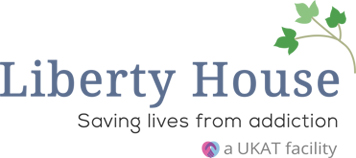Tramadol addiction
Tramadol is a powerful medication that is prescribed for pain relief but it is often misused and abused which can lead to addiction. Tramadol addiction is a serious problem that has been on the rise for the last twenty-five years and in 2020 alone, there were 203 deaths by tramadol poisoning.
Tramadol addiction may seem unbeatable with its powerful cravings and severe tramadol withdrawal symptoms, but with professional guidance and support you can overcome it. Tramadol addiction treatment at a specialist tramadol rehab centre like Liberty House can help you address every aspect of the condition and free you from tramadol addiction once and for all.

What is tramadol addiction and how does it develop?
Tramadol is a synthetic opioid painkiller that is similar to morphine. It is usually prescribed for moderate to severe pain relief and is available as an oral tablet, extended-release oral tablet, and an injection. Tramadol addiction, a common form of prescription drug addiction, is when you are unable to stop using tramadol despite the negative consequences it is having in your life and it can develop in a number of different ways:
Tramadol addiction through prescription use
Some people who are prescribed tramadol develop a tolerance to the drug which is when you need to take higher doses to get the same level of pain relief or experience the same high. This can result in you becoming dependent on tramadol whereby you need to take it just to feel “normal”. Dependency also means that your body has become accustomed to having tramadol in its system so you will experience tramadol withdrawal symptoms when you try to stop taking it. You can develop tramadol dependence even if you use tramadol according to your doctor’s instructions but it is especially common when the drug is misused.
Addiction through tramadol abuse
Tramadol addiction can also develop if the drug is taken without a prescription, either for recreation or to self-medicate for other conditions such as anxiety or depression. Here too, you can quickly develop a tolerance where you need more and more tramadol to get the same effects and then become dependent on the drug.
Whatever the route, opiate addiction to drugs such as tramadol can develop extremely quickly due to the potency of the medication. Once you are addicted, it can be very difficult to break free without professional help.
What does tramadol addiction treatment involve?
There are three main stages which are required to effectively treat tramadol addiction: rehab treatment, detox and aftercare.
Tramadol rehab
During tramadol rehab, you will start to address the psychological aspects of your addiction and develop the tools and skills you need to maintain your sobriety in the long term.
At Liberty House, we provide inpatient tramadol rehab to all our clients because we believe this is the most effective recovery environment. In inpatient tramadol rehab you will be shielded from any triggers or stressors in your life that may tempt you to relapse and will have time to connect with the staff and other clients.
During tramadol rehab, you will participate in a range of different therapies to address every facet of your addiction. At Liberty House, these include:
- Cognitive behavioural therapy (CBT) – to help you identify and change any negative thinking and behaviours that may have contributed to your tramadol addiction
- Group therapy – to share your experiences of tramadol with other clients in recovery and learn from their experiences
- Individual therapy – to work one-on-one with a therapist to address any personal issues that may have contributed to your tramadol addiction (at Liberty House, all our therapists have been through recovery themselves so they have first-hand knowledge of your experience)
- Family therapy – to help heal the damage caused by tramadol addiction and develop a support network of family and friends who will be there for you during your recovery
- Relapse prevention – to learn about the triggers and warning signs of tramadol addiction relapse and how to avoid them
- Yoga therapy – to help you develop a healthy mind-body connection and learn to cope with difficult feelings and emotions which could push you towards using tramadol
- Meditation – to help you focus on the present moment and develop a sense of calm

Tramadol detox
While tramadol rehab addresses the psychological aspects of addiction, you will also need to undergo tramadol detox. This is when you stop taking tramadol and allow your body to rid itself of the toxins in the drug. Tramadol detox is very important because it will break your physical dependence on tramadol so you can focus on the psychological aspects of your tramadol addiction.
During detox, you will experience tramadol withdrawal symptoms as your body adjusts to being without the drug. Tramadol withdrawal symptoms will usually begin within eight to twenty-four hours since your last use and can take a few days or up to a couple of weeks depending on the severity of your addiction, how long you have been taking tramadol and your overall health.
Tramadol withdrawal symptoms can include:
- Anxiety
- Insomnia
- Muscle aches and pains
- Nausea and vomiting
- Diarrhoea
- Cold sweats
- Fever
- Intense cravings for tramadol
At Liberty House, our team of experienced medical professionals will give you a full medical assessment before you begin inpatient tramadol detox to devise a detox plan that is right for you. This will usually involve tapering your dose down gradually over a period of days or weeks to minimise the severity of tramadol withdrawal symptoms. Our team will also provide 24/7 support and monitoring throughout your detox to ensure your safety and comfort.
Aftercare
After you have completed tramadol detox and rehab, it is important to continue your recovery journey with an aftercare programme. This will help to reduce your risk of relapse and provide you with ongoing support as you adjust to life without tramadol. Liberty House provides all our clients with weekly group therapy sessions for a year after they leave rehab. This enables us to extend the sense of community we create in tramadol rehab and ensure that you are never alone struggling during difficult moments.
Who is most at risk of tramadol addiction?
Those who are most at risk of developing tramadol addiction include the following people:
- Those with a history of substance abuse or mental health disorders
- Those who have been prescribed high doses of tramadol for a long time
- Those with substance abuse and addiction history in their families
- Those who have experienced trauma
- Those who misuse tramadol by taking it more often or in higher doses than prescribed
- Those who take tramadol for non-medical reasons such as to get high
Do I need tramadol addiction treatment?
Many people don’t understand that addiction can be incredibly manipulative and will do everything in its power to prevent you from getting the help you need. The first step in overcoming tramadol addiction is admitting that you need help. The fact you are reading this page indicates that you are aware there is an issue, but here are some questions to ask yourself which can be further signs of tramadol addiction:
- Am I using tramadol without a prescription or outside of my doctor’s instructions?
- Do I feel like I need tramadol to get through the day or manage my pain?
- Have family or friends expressed concern about my tramadol use?
- Has tramadol use caused issues with my health or in other areas of my life?
- Do I experience tramadol withdrawal symptoms when I try to stop taking the drug?
- Have I used other opiates or opioid medications when I have been unable to obtain tramadol?
If you have answered yes to any of the above, you may need tramadol addiction treatment. Liberty House has helped many people with tramadol addiction to get their lives back on track and we can help you do the same.
What are the effects of tramadol abuse and addiction?
Tramadol abuse and addiction can cause a range of physical, psychological, and social problems including:
Physical effects:
- Insomnia
- Headaches
- Dizziness
- Nausea and vomiting
- Constipation or diarrhoea
- Weight loss or gain
- Sexual dysfunction
- Tremors
- Seizures
- Kidney damage
- Liver damage
- Fatal overdose
Mental and psychological effects:
- Anxiety
- Depression
- Mood swings
- Irritability
- Paranoia
- Psychosis

Social effects:
- Strained or broken relationships
- Loss of interest in activities you used to enjoy due to preoccupation with tramadol
- Problems at work or school due to absences or tramadol-related performance issues
- Financial problems due to the cost of tramadol and employment issues
- Criminal activity such as theft or drug dealing in order to get money to buy more tramadol
- Abuse of and addiction to illegal drugs like heroin when tramadol is unobtainable
How do I get started with tramadol addiction treatment?
If you are ready to start your recovery journey, the first step is to reach out and ask for help. The team at Liberty House are here to support you every step of the way and can answer any questions you may have about getting started with tramadol addiction treatment. Get in touch with us today and we will help you take the first and most important step towards long-term tramadol recovery.
Frequently asked questions
- Attending aftercare and support group sessions
- Staying in touch with your support network of family and friends
- Identifying and avoiding triggers
- Learning to cope with difficult emotions in a healthy way
- Making new friends who don’t use drugs or encourage an unhealthy lifestyle
- Practising all the skills and tools you learned in tramadol rehab on a daily basis
- Being honest about any tramadol slip-ups or relapses – this will help you to identify what went wrong and make necessary changes to avoid it happening again
- Finishing tramadol prescriptions early
- Taking tramadol even though they haven’t been prescribed it
- A change in appearance or hygiene
- A change in sleeping patterns
- A change in eating habits
- A change in mood or behaviour, such as increased irritability, secrecy or defensiveness
- Loss of interest in formerly enjoyed hobbies or activities

